Hunter
Don’t live with regret.
- Joined
- Aug 24, 2025
- Posts
- 2,718
- Reputation
- 6,808
Table of Contents will include:
Origin of Sleep Wrinkle formation/expenditure
Sleep wrinkles are created by the same simple physics that folds fabric: repeated pressure, folding, and shear forces applied in the same direction night after night. When the side of the face gets pressed into a pillow, the skin doesn’t simply rest there; it bends, creases, and shifts across the underlying bone. These deformations last for hours at a time, allowing the collagen structure to partially mold to whatever shape it was forced into. With enough repetition, those temporary morning creases stop disappearing fully and start forming persistent lines.
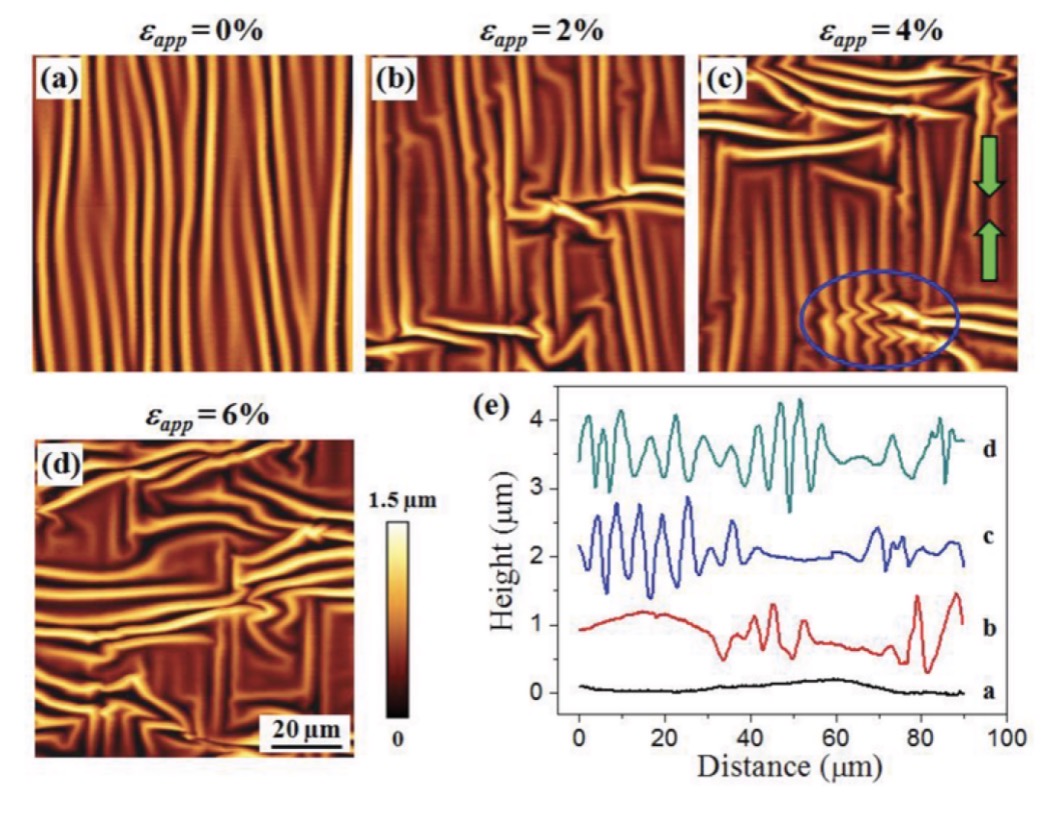
You should be reducing long-duration contact between the face and the pillow is the only way to eliminate the mechanical input. Back sleeping reduces most compression related patterns.
https://pubmed.ncbi.nlm.nih.gov/27329660/
Age Related Decline in Tissue Resistance
Younger skin can tolerate repeated compression because collagen fibers rebound quickly and the dermal layer is thick enough to resist folding. As collagen density drops and elasticity declines, the same amount of force causes deeper and more persistent deformation. This doesn’t just produce visible lines it affects how easily the skin folds under pressure the next night. Aging lowers the threshold for wrinkle formation, so a pattern that would have vanished in your twenties starts leaving permanent markings in your thirties and forties.
Anything that increases dermal resilience is shown to slow down this process.
https://pmc.ncbi.nlm.nih.gov/articles/PMC2699641/?utm_
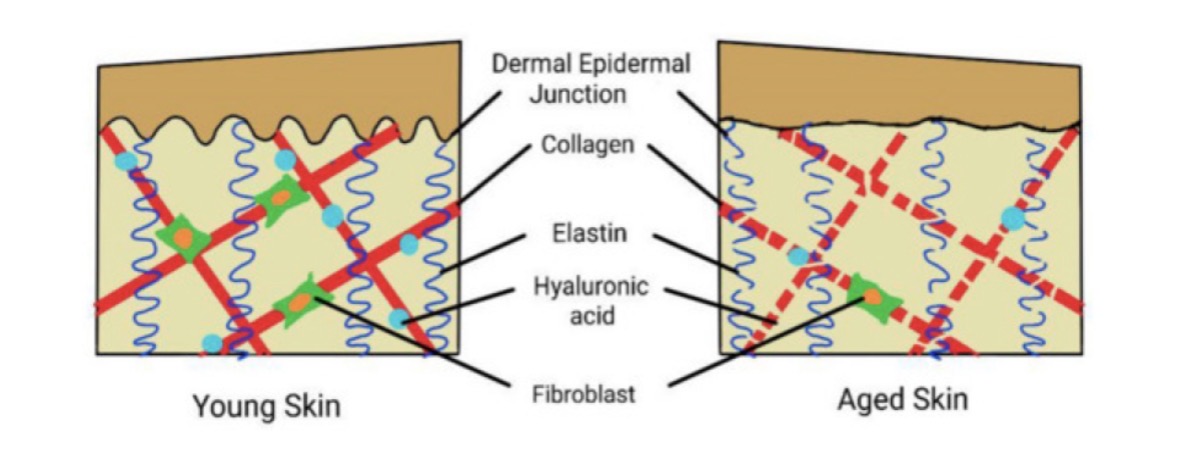
Sleep Positions and Compression Load
Sleep studies consistently show a pattern: around two thirds of total sleep time is spent on the side, about one-third on the back, and a small portion on the stomach. Side sleeping produces the most consistent wrinkle patterns because the contact area is wide: cheek, temple, jaw, and peri-oral region all press into the pillow. Stomach sleeping adds torsion forces because the head is rotated sharply.
Another variable is movement frequency. Younger people shift roughly 25–30 times per night; older adults shift closer to 15. Fewer shifts = longer unchanged/regulated compression which leads to deeper lines.
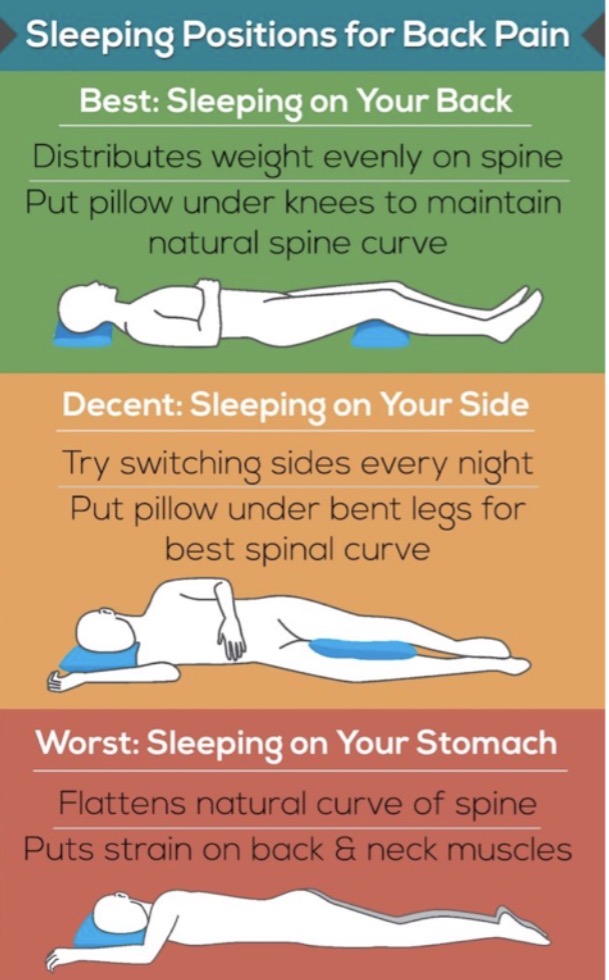
https://pubmed.ncbi.nlm.nih.gov/29138608/
https://academic.oup.com/sleep/article-abstract/15/2/143/2742862?redirectedFrom=PDF&login=false
Regional Wrinkle Patterns
Sleep wrinkles do not follow muscle anatomy. They follow the direction of pressure. That’s why they appear at odd angles across the cheeks or diagonally on the forehead. The cheek is the most commonly affected region because it’s broad, flat, and gets compressed against the pillow surface the longest. The lips and midface develop vertical or oblique creases from upward or lateral displacement of tissue. The temple and lateral forehead show parallel compression lines that do not align with expression
Focus on high protected contact zones:
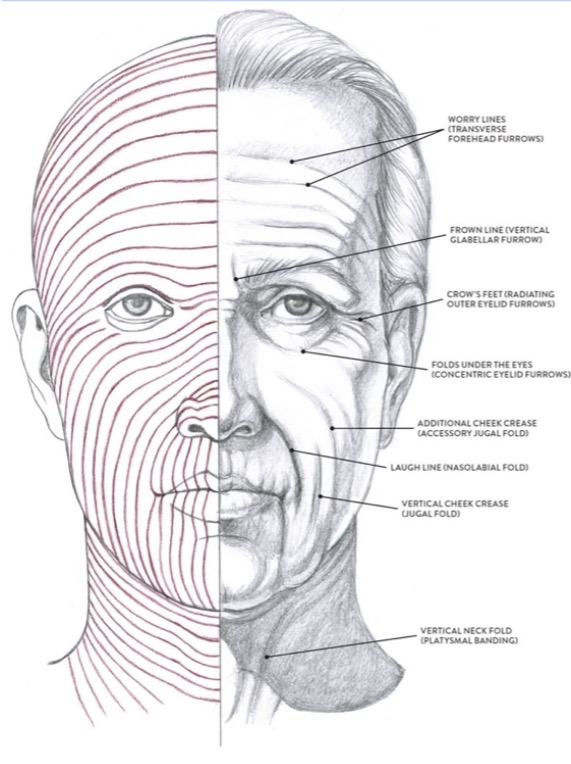
https://pubmed.ncbi.nlm.nih.gov/27329660/
Why Neurotoxins Don’t Work Here
Expression lines come from muscular contraction; sleep wrinkles come from external mechanical deformation. Botox stops movement but does nothing to stop the nightly pressure that folds the skin. That’s why people can have completely relaxed forehead muscles yet still develop diagonal compression creases across the same region.
Fillers can help temporarily by restoring structure beneath areas that collapse easily, but they do not eliminate the cause.
You Should be using neurotoxins only for dynamic lines.
Use fillers or biostimulators only for structural support not as a primary solution.
Mechanical changes remain the foundation.
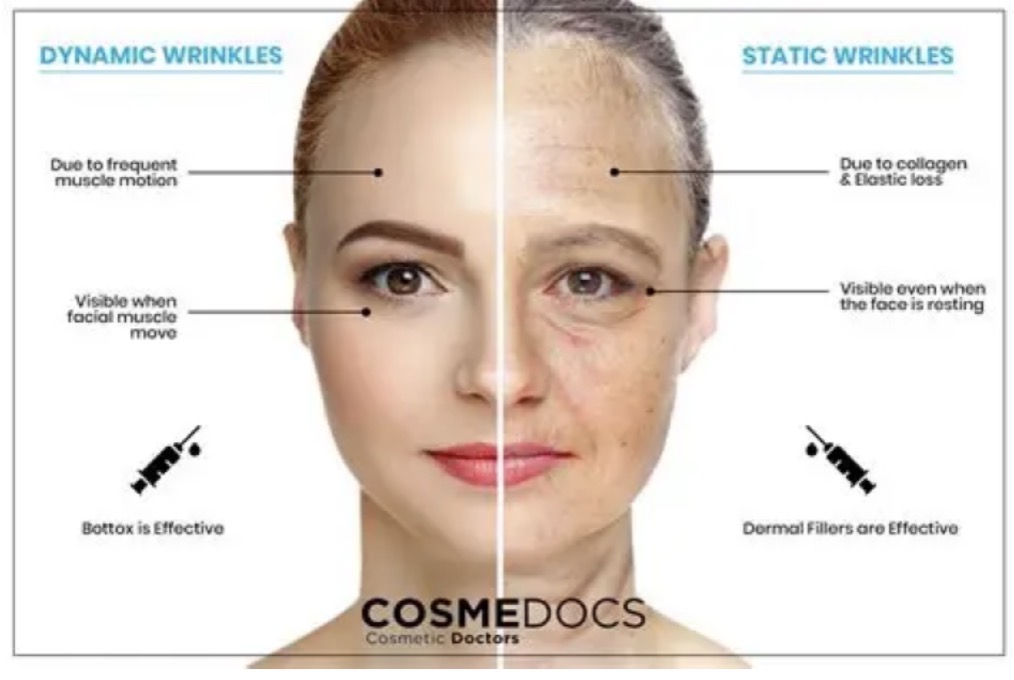
https://www.aafp.org/pubs/afp/issues/2014/0801/p168.html?utm_
https://pubmed.ncbi.nlm.nih.gov/27329660/
Practical Fixes, aka reducing mechanical stress
The most effective interventions come down to controlling force, duration, and angle.
Mechanical prevention options:
Train yourself to sleep on your back
Use pillows specifically designed to prevent side rotation
Keep pillow height low enough that your jaw doesn’t get pushed sideways
Use firmer pillows that don’t collapse and wrap around the face
Consider a CPAP-style head cradle pillow (even if you don’t use CPAP) because they reduce face contact
Extra
Silk pillowcases reduce shear forces
Avoid sleeping with your hand pressed into your cheek (major cause of diagonal creasing)
Mechanical reduction provides the largest effect out of all interventions.
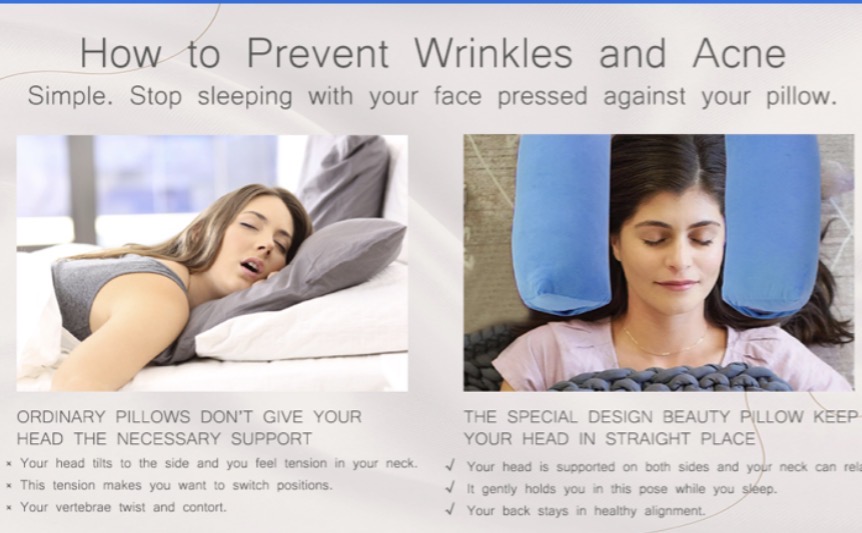
https://academic.oup.com/asj/article-abstract/36/8/931/2613967?redirectedFrom=fulltext&utm_
https://www.sleepfoundation.org/best-bedding/silk-pillowcase-benefits?utm_
https://jamanetwork.com/journals/jamadermatology/fullarticle/412795?utm_
https://pmc.ncbi.nlm.nih.gov/articles/PMC11499218/?utm_
Anatomical Weak Points That Get Worse With Pressure
As the facial fat pads descend and the subcutaneous structure thins, the skin loses its natural “buffer” against compression. Areas with low bone projection such as flat cheeks or reduced zygomatic width absorb pressure because the tissue gets pushed directly into the underlying skeleton. This is why people with good zygo projection age better in terms of sleep wrinkles: the pillow force distributes across a broader contour instead of collapsing into one point.
Biostimulators (Sculptra, Radiesse) for long term reinforcement.
Hyaluronic fillers for restoring/fixing midface volume.
And avoid sleeping positions that force the cheek inward.
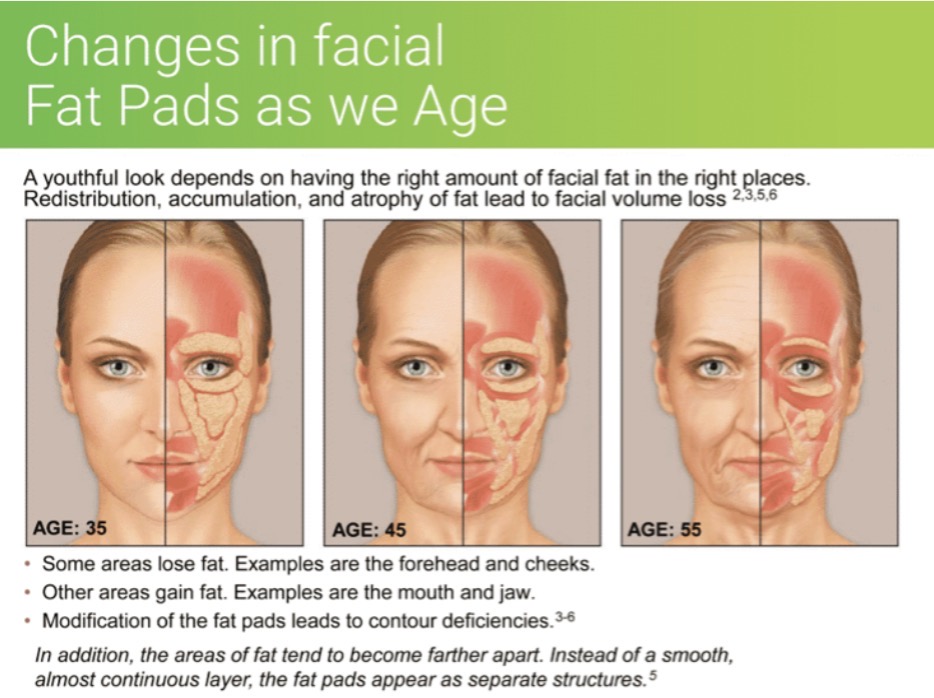
https://pmc.ncbi.nlm.nih.gov/articles/PMC11025388/?utm_
https://www.accessdata.fda.gov/cdrh_docs/pdf3/p030050s002c.pdf?utm_
TLDR:
Sleep wrinkles form in response to distortion created when the face is pressed against any sleep surface. They tend to worsen over time due to repetition combined with thinning of the skin and decreased elasticity as we age," explains ASAPS member and lead author, Dr. Goesel Anson.
Sleep wrinkles are also influenced by the amount of time spent in various positions. While our initial sleep position is a conscious decision, we change positions throughout the night unconsciously. The number of shifts decreases as we age from 27 to 16 per night, with an average of about 20 position shifts. The lateral (side) sleep position is the most common in studies averaging 65%, with the remaining 30% in the supine (back) position, and 5% in the prone (stomach) position. While some sleep wrinkle patterns can reinforce facial expression lines, most sleep wrinkles tend to be perpendicular to expression wrinkles. Most sleep wrinkles can be seen on the forehead, lips and cheeks. Unlike facial expression wrinkles caused by muscle contractions, sleep wrinkles that are formed because of mechanical compression during sleep can't be eliminated using Botulinum Toxin.
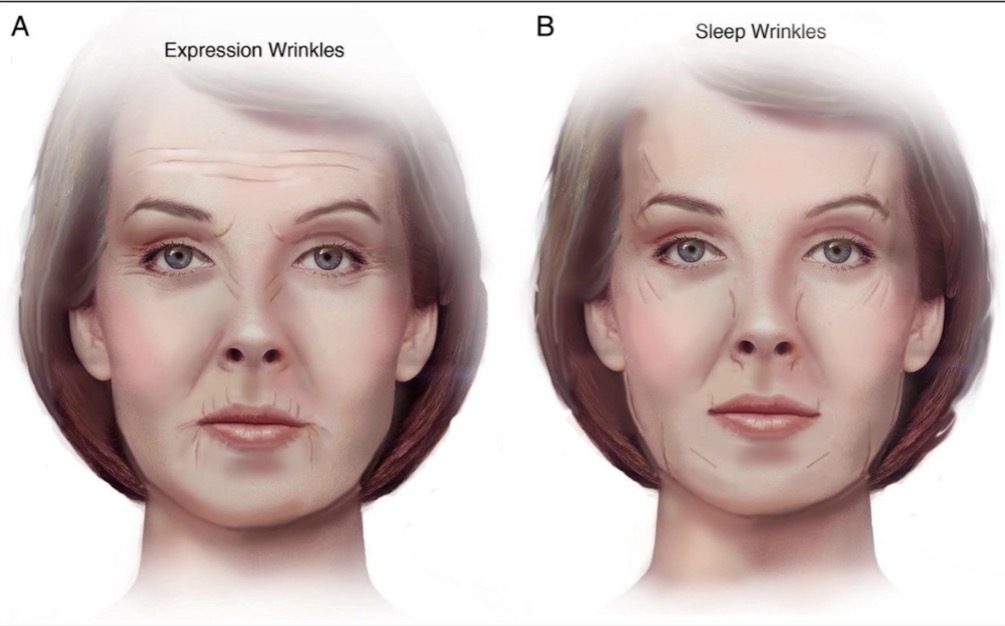
Dr. Anson notes, "One way to minimize sleep wrinkles is to limit facial distortion during sleep. If you can stay on your back, that's ideal.There are several specialty pillows available to help achieve that. Dermal fillers can temporarily improve wrinkles of any type however neurotoxins won't have much effect on these wrinkles since they are not caused by muscle contractions.”
@idkmanimao Helped make this thread
- Origin of Sleep Wrinkle formation/expanditure
- Age Related Decline in Tissue Resistance
- Positional Behavior and Compression Distribution
- Distortion Patterns and Anatomical Regions
- Neurotoxin Ineffectiveness and Mechanical Etiology
- Mechanical Load: Positional Control
- Structural Vulnerabilities and Facial Architecture
- Long Term Mitigation
Origin of Sleep Wrinkle formation/expenditure
Sleep wrinkles are created by the same simple physics that folds fabric: repeated pressure, folding, and shear forces applied in the same direction night after night. When the side of the face gets pressed into a pillow, the skin doesn’t simply rest there; it bends, creases, and shifts across the underlying bone. These deformations last for hours at a time, allowing the collagen structure to partially mold to whatever shape it was forced into. With enough repetition, those temporary morning creases stop disappearing fully and start forming persistent lines.

You should be reducing long-duration contact between the face and the pillow is the only way to eliminate the mechanical input. Back sleeping reduces most compression related patterns.
https://pubmed.ncbi.nlm.nih.gov/27329660/
Age Related Decline in Tissue Resistance
Younger skin can tolerate repeated compression because collagen fibers rebound quickly and the dermal layer is thick enough to resist folding. As collagen density drops and elasticity declines, the same amount of force causes deeper and more persistent deformation. This doesn’t just produce visible lines it affects how easily the skin folds under pressure the next night. Aging lowers the threshold for wrinkle formation, so a pattern that would have vanished in your twenties starts leaving permanent markings in your thirties and forties.
Anything that increases dermal resilience is shown to slow down this process.
https://pmc.ncbi.nlm.nih.gov/articles/PMC2699641/?utm_

Sleep Positions and Compression Load
Sleep studies consistently show a pattern: around two thirds of total sleep time is spent on the side, about one-third on the back, and a small portion on the stomach. Side sleeping produces the most consistent wrinkle patterns because the contact area is wide: cheek, temple, jaw, and peri-oral region all press into the pillow. Stomach sleeping adds torsion forces because the head is rotated sharply.
Another variable is movement frequency. Younger people shift roughly 25–30 times per night; older adults shift closer to 15. Fewer shifts = longer unchanged/regulated compression which leads to deeper lines.

https://pubmed.ncbi.nlm.nih.gov/29138608/
https://academic.oup.com/sleep/article-abstract/15/2/143/2742862?redirectedFrom=PDF&login=false
Regional Wrinkle Patterns
Sleep wrinkles do not follow muscle anatomy. They follow the direction of pressure. That’s why they appear at odd angles across the cheeks or diagonally on the forehead. The cheek is the most commonly affected region because it’s broad, flat, and gets compressed against the pillow surface the longest. The lips and midface develop vertical or oblique creases from upward or lateral displacement of tissue. The temple and lateral forehead show parallel compression lines that do not align with expression
Focus on high protected contact zones:
- Use a pillowcase material that decreases friction (silk or sateen)
- Elevate the head slightly to reduce facial sinking
- Avoid deep, soft pillows that wrap around the face

https://pubmed.ncbi.nlm.nih.gov/27329660/
Why Neurotoxins Don’t Work Here
Expression lines come from muscular contraction; sleep wrinkles come from external mechanical deformation. Botox stops movement but does nothing to stop the nightly pressure that folds the skin. That’s why people can have completely relaxed forehead muscles yet still develop diagonal compression creases across the same region.
Fillers can help temporarily by restoring structure beneath areas that collapse easily, but they do not eliminate the cause.
You Should be using neurotoxins only for dynamic lines.
Use fillers or biostimulators only for structural support not as a primary solution.
Mechanical changes remain the foundation.

https://www.aafp.org/pubs/afp/issues/2014/0801/p168.html?utm_
https://pubmed.ncbi.nlm.nih.gov/27329660/
Practical Fixes, aka reducing mechanical stress
The most effective interventions come down to controlling force, duration, and angle.
Mechanical prevention options:
Train yourself to sleep on your back
Use pillows specifically designed to prevent side rotation
Keep pillow height low enough that your jaw doesn’t get pushed sideways
Use firmer pillows that don’t collapse and wrap around the face
Consider a CPAP-style head cradle pillow (even if you don’t use CPAP) because they reduce face contact
Extra
Silk pillowcases reduce shear forces
Avoid sleeping with your hand pressed into your cheek (major cause of diagonal creasing)
Mechanical reduction provides the largest effect out of all interventions.

https://academic.oup.com/asj/article-abstract/36/8/931/2613967?redirectedFrom=fulltext&utm_
https://www.sleepfoundation.org/best-bedding/silk-pillowcase-benefits?utm_
https://jamanetwork.com/journals/jamadermatology/fullarticle/412795?utm_
https://pmc.ncbi.nlm.nih.gov/articles/PMC11499218/?utm_
Anatomical Weak Points That Get Worse With Pressure
As the facial fat pads descend and the subcutaneous structure thins, the skin loses its natural “buffer” against compression. Areas with low bone projection such as flat cheeks or reduced zygomatic width absorb pressure because the tissue gets pushed directly into the underlying skeleton. This is why people with good zygo projection age better in terms of sleep wrinkles: the pillow force distributes across a broader contour instead of collapsing into one point.
Biostimulators (Sculptra, Radiesse) for long term reinforcement.
Hyaluronic fillers for restoring/fixing midface volume.
And avoid sleeping positions that force the cheek inward.

https://pmc.ncbi.nlm.nih.gov/articles/PMC11025388/?utm_
https://www.accessdata.fda.gov/cdrh_docs/pdf3/p030050s002c.pdf?utm_
TLDR:
Sleep wrinkles form in response to distortion created when the face is pressed against any sleep surface. They tend to worsen over time due to repetition combined with thinning of the skin and decreased elasticity as we age," explains ASAPS member and lead author, Dr. Goesel Anson.
Sleep wrinkles are also influenced by the amount of time spent in various positions. While our initial sleep position is a conscious decision, we change positions throughout the night unconsciously. The number of shifts decreases as we age from 27 to 16 per night, with an average of about 20 position shifts. The lateral (side) sleep position is the most common in studies averaging 65%, with the remaining 30% in the supine (back) position, and 5% in the prone (stomach) position. While some sleep wrinkle patterns can reinforce facial expression lines, most sleep wrinkles tend to be perpendicular to expression wrinkles. Most sleep wrinkles can be seen on the forehead, lips and cheeks. Unlike facial expression wrinkles caused by muscle contractions, sleep wrinkles that are formed because of mechanical compression during sleep can't be eliminated using Botulinum Toxin.

Dr. Anson notes, "One way to minimize sleep wrinkles is to limit facial distortion during sleep. If you can stay on your back, that's ideal.There are several specialty pillows available to help achieve that. Dermal fillers can temporarily improve wrinkles of any type however neurotoxins won't have much effect on these wrinkles since they are not caused by muscle contractions.”
@unon @Org3cel @Orka @chadisbeingmade @SlayerJonas
@Volksstaffel @BigBallsLarry @Aryan Incel @aids @Sadist
Last edited:



